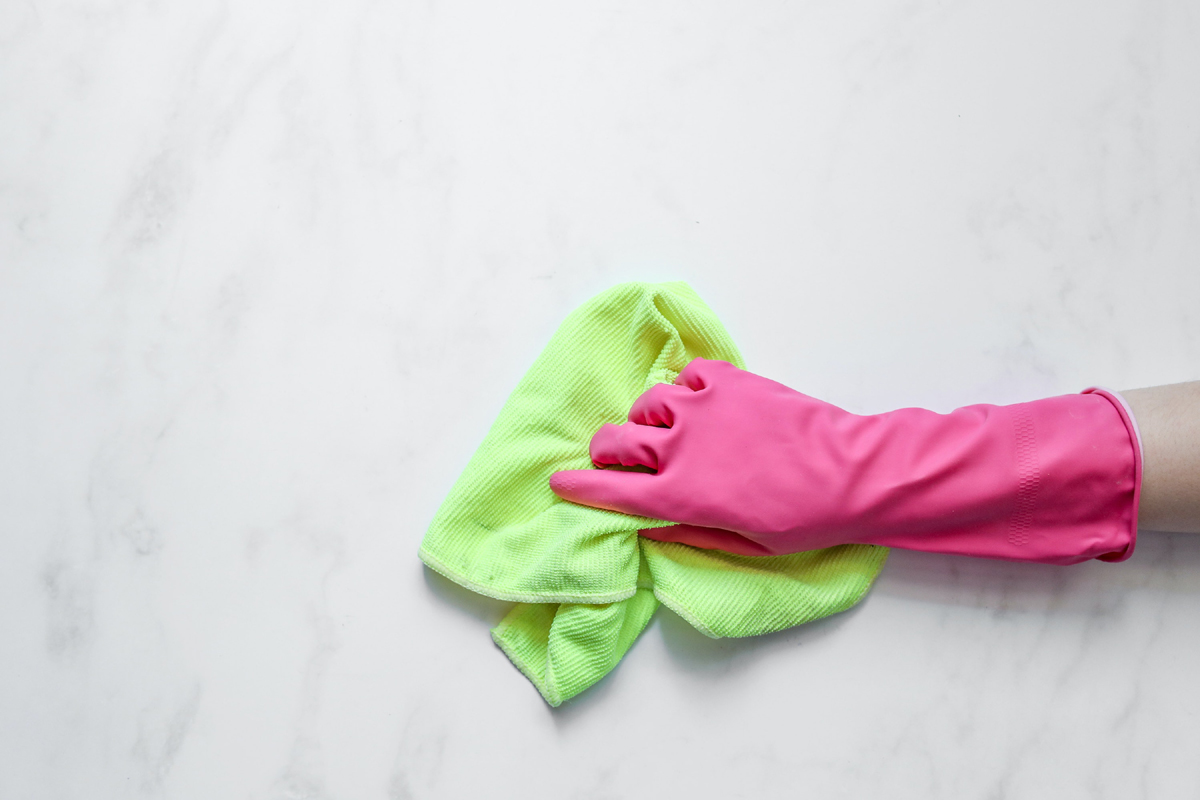Cleaning Fabric Wall Coverings
Some are vinyl-coated and easy to wash. Others, like burlap or grass cloth, are very hard to clean when stained. You might try wiping lightly with a sponge dampened in suds and water; test first in an inconspicuous spot to be sure the water won’t stain the covering. Best method is to follow directions provided by the manufacturer of that covering, or ask a dealer for a cleaner recommended for that wall covering.
Cleaning Fabric Wall Coverings
Dust occasionally with a clean cloth or vacuum to remove loose dirt. Wash spots and stains with a sponge or soft bristle brush soaked in a mild detergent or soap solution. Rinse well. If you really have a trouble spot, add two or three tablespoons of bleach. Use the non chlorine type for delicate fabrics. Rinse with plenty of clear water and dry with an absorbent towel to prevent streaking.
Cleaning Sooty Walls
Increased use of wood stoves and fireplaces and some return to coal stoves, may result in increased deposits of smoky, sooty soil on walls, and ceilings near the stoves. This soil is greasy, and therefore an alkaline cleaner works best to remove it. A stronger solution is usually needed than for normal soil, but too strong a solution can damage the wall finish.
On painted walls and woodwork, a solution of one tablespoon of trisodium phosphate (TSP) in 1 gallon warm water, applied with a sponge should remove this soil. Rinse well with a sponge dipped in clear water. Wiping off excess water with absorbent cotton rags (which can be laundered and reused many times) leaves the surface cleaner. Change washing and rinse waters often.
If this solution does not remove the sooty soil, a little more TSP can be added but try not to get much more than 2 tablespoonsful per gallon. Too much TSP will dull the surface of paint, or actually remove paint. TSP is sold in paint stores used by professional painters, and is actually used in stronger concentrations to remove paint or dull the surface gloss of enamel before repainting.
Alkalis that may be added to warm water for removing these greasy soil deposits include ammonia, washing soda, and laundry detergent (low sudsing types are easiest to rinse off). Try a small amount first, and only increase the concentration if the soil is stubborn, remembering too strong a solution will remove some paint. Wear rubber gloves to protect your skin. Avoid spilling on other surfaces in the room and wipe up promptly if spills do occur.
Cleaning off such soil is best done as an annual chore, in late spring, after the heating season is ended. Then walls will stay clean longer.
Wallpaper – Removing Spots and Stains:
Fingermarks, smudges, pencil marks:
Rub gently with art gum or commercial wallpaper cleaner. On washable paper, wipe with damp sponge, or sudsy sponge and then damp sponge if needed to remove mark.
Grease Spots:
1. Hold clean white blotter or several white paper towels over spot and press with warm iron until grease is absorbed by towels.
2. If grease still remains, apply a paste spot remover; brush off after it dries to a powder.
3. If washable paper–may be able to wipe off with sudsy sponge, followed by damp sponge.
Crayon:
(You have to remove both wax/grease and color.)
1. If thick amount left, scrape off excess with table knife.
2. Use warm iron and white paper towel method as under “grease spots”.
3. For non-washable papers, try paste spot remover as under “grease spots”. Or wipe gently with a cloth moistened with denatured alcohol or spot remover; these are flammable and vapors are toxic, so be sure there is no flame, spark, or pilot light in area, have plenty of ventilation, and use only on small spots.
4. For washable papers, use sudsy sponge after steps 1 and 2. Try not to smear the residue. ***Buy washable crayons for children!
Wallpaper Cleaning – “Scrubbable” Wall Coverings:
Wall coverings labeled “scrubbable” are vinyl or vinyl-impregnated paper. They can be scrubbed with a foam cleanser or all-purpose detergent, using a sponge or soft cloth, and rinsed with clean sponge or cloth. Do not use any abrasive liquid cleaners (“Softscrub”,etc), nor any scouring powders nor any other abrasives, as these could scratch the vinyl finish. These wall coverings are more practical for rooms that get lots of use.
The Author:
Anne Field, Extension Specialist, with credit to MSU Extension.

To get crayon marks off walls, spray with WD-40, then wipe off with paper towels. This really works!!
Thank you for sharing this tip! Using WD-40 to remove crayon marks from walls sounds like a great solution. I will definitely try this method out.
Crayon Marks on the Walls – Use white toothpaste and a dry cloth, it can require some scrubbing, but it gets the crayon off the wall completely.
Thank you for sharing this tip! I always struggle with crayon marks on my walls, so I’m definitely going to try using white toothpaste and a dry cloth. I appreciate the suggestion and I hope it works effectively in removing the crayon marks completely. Cleaning walls can be quite a task, but learning these simple hacks makes the process easier.